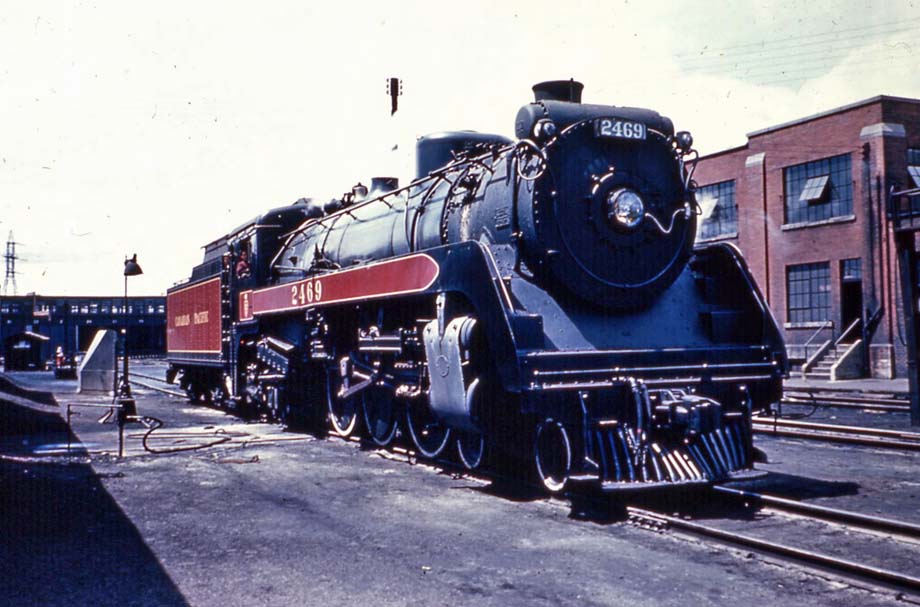
Canadian Pacific Staff Bulletin - August, 1945
Distinguish Latest 2400 Locomotives

Pistons with flame-hardened ring grooves were a first-in-Canada feature when Engine 2462 was delivered
to the company as the last of an order for 45 of these Pacific type locomotives. It was the 10th engine to be
so equipped in the order placed with Canadian Locomotive Company in Kingston, Ontario.
Another application made for the first time in Canada on this order was die made aluminum crosshead slippers on five of the engines. The pioneer piston ring grooves and crosshead slippers both are experimental installations in the continuing program of adapting latest advances to Canadian Pacific equipment for improved transportation service.
The last engine received went into immediate service as a working unit in the power lineup which had made an impressive war hauling record by moving 235 million tons of freight and 68 million pasengers up to the end of 1944.
Thirty-six of engine 2462's predecessors in this 45 locomotive order were in service in February of 1945 to share the all-time high revenue freight movement over Eastern Lines in the 28 storm swept days of that month when 393,226 loaded revenue cars were moved.
The latest delivery brought to 176 the number of new engines received since the start of the war, with that total including two constructed at the company's Angus Shops to develop specifications for postwar power replacement.
On order now are 30 engines which follow the specifications developed at Angus and 13 diesel-electric switchers, duplicates of the 15 placed in service in war busy marshalling yards since 1943.
The flame-hardening of piston ring grooves on engine 2462 and its nine immediate predecessors is expected to reduce maintenance costs by prolonging life of the pistons. A comparatively recent process, flame-hardening has been used extensively on munitions contracts, particularly on tank turret tracks.
In the main crosshead connecting the piston rod and the main rod on the engines motion the substitution for steel of an extruded aluminum alloy slipper cuts down the weight by approximately one-third, a prime objective of engineers seeking to reduce stresses on moving parts.
The pioneer piston ring grooves and crosshead slippers applied to the late 2400's are added to a considerable list of such first-in-Canada installations made on new engines by the mechanical department over the war years.
Among the first moves in this line was substitution for Belgian, American, and English steel, shell plate and jacket steel of made-in-Canada materials. On the engines developed at Angus weight was saved by reducing the cab overhang on the boiler and by using aluminum instead of steel in the upper portion.
Existing power also has been the subject of experimental installations in this program, as in the case of a remote control mechanism for the important blower valve, now being tested on a company locomotive after observation of its success on 'planes and naval craft.
 and is reprinted here with their permission. All photographs,
logos, and trademarks are the property of the Canadian Pacific Railway Company.
and is reprinted here with their permission. All photographs,
logos, and trademarks are the property of the Canadian Pacific Railway Company.
